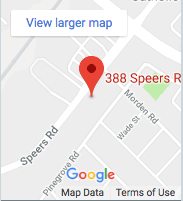 Glaucoma is a common condition among people who are 40 and older. It’s a disorder caused by a buildup of pressure inside the eye that triggers damage to the eye’s optic nerve, which transmits images to the brain.
Glaucoma is a common condition among people who are 40 and older. It’s a disorder caused by a buildup of pressure inside the eye that triggers damage to the eye’s optic nerve, which transmits images to the brain.
This condition tends to be inherited and may not show up until later in life. You may not even know if you have mild glaucoma because your vision may remain normal so it’s important to have regular eye exams, as recommended by your eye doctor. Early treatment of glaucoma can slow or prevent loss of vision and blindness.
Causes of Glaucoma
A buildup of pressure in your eye can happen when eye fluid isn’t circulating in the front part of the eye as it should. The fluid normally flows out of the eye through a mesh-like channel. If the channel becomes blocked, fluid builds up and causes glaucoma.
Doctors don’t know the direct cause of the blockage, but they do know that it can be inherited.
Other, less common causes of glaucoma include the following:
• blunt or chemical injury to the eye
• a severe eye infection
• blockage of blood vessels in the eye
• inflammatory conditions of the eye
• eye surgery to correct another condition
Glaucoma usually occurs in both eyes, but may involve each eye to a different degree.
Two Main Types of Glaucoma
The two main types of glaucoma are as follows:
• Open-angle glaucoma, or wide-angle glaucoma, is the most common type of glaucoma. Structures of the eye appear normal, but fluid in the eye doesn’t flow properly through the drain of the eye.
• Angle-closure glaucoma or chronic angle-closure glaucoma is less common in the West than in Asia. Poor drainage is caused because the angle between the iris and the cornea is too narrow and blocked by the iris.
Risk Factors for Glaucoma
Glaucoma commonly occurs in adults over the age of 40, but can also happen in young adults, children and even infants. Glaucoma happens more frequently, at an earlier age and with greater vision loss in African-Americans.
You have an increased risk of developing glaucoma if you are:
• African-American, Irish, Russian, Japanese, Hispanic, Inuit, or Scandinavian
• Over age 40
• Have a family history of glaucoma
• Have poor vision
• Have diabetes
• Take certain steroid medications
• Have had trauma to one or both eyes
Symptoms of Glaucoma
For most people, there are usually few or no symptoms of glaucoma. The first sign of glaucoma is often the loss of peripheral or side vision, which can go unnoticed until late in the disease. Sometimes, intraocular pressure can rise to severe levels, in which case sudden eye pain, headache, blurred vision or the appearance of halos around lights may occur.
Other symptoms that signal the need for immediate medical care include redness in the eye, eyes that look hazy, especially in babies, and nausea or vomiting.
Treatment of Glaucoma
The first treatment for glaucoma is eye drops. If the eye drops don’t control it, laser or microsurgery is the next step.
Glaucoma can’t be prevented but, when diagnosed and treated early, the disease can be controlled. Most people with glaucoma retain their sight if they follow their treatment plan and have regular eye exams.

